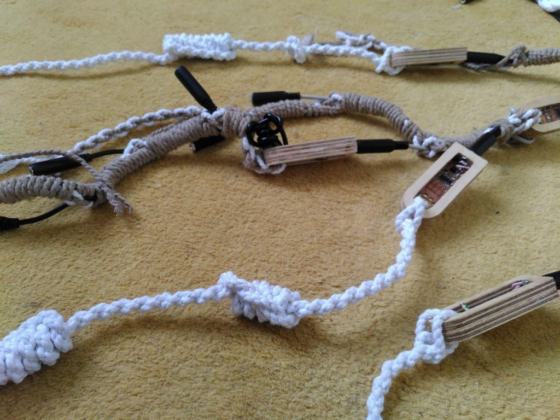I’ve been a bit behind on blogging in general, but made five posts in the Algorithmic Pattern blog yesterday.. On … More
Category: visualisation
Cyclic visualiser
Something I did ages ago on a residency, made a video a while back but forgot to put it here, … More
Patterns
Ellen Harlizius-Klück asked me for some greyscale images that she could try to weave while visiting Textiles Zentrum Haslach. Here’s my … More
Sonic Pattern and the Textility of Code
Really excited to be involved with this dream event in London next month: Sonic Pattern and the Textility of Code … More
Experimentallabor residency
I’m on the way to take part in a short residency in Dusseldorf, hosted by Julian Rohrhuber at the Robert … More
Colourful texture
Texture v.2 is getting interesting now, reminds me of fabric travelling around a loom.. Everything apart from the DSP is … More
Texture 2.0 bug exposure
Texture 2.0 (my Haskell based visual live programming language) is working a bit more. It has reached gabber zero – … More
PhD Thesis: Artist-Programmers and Programming Languages for the Arts
With some minor corrections done, my thesis is finally off to the printers. I’ve made a PDF available, and here’s … More
Attending to presentation slides
I had some fun with my talk at ICMC earlier this month. I started in the usual way with an … More
Workshop output
The Text live coding workshop went really well, surprisingly well considering it was the first time anyone apart from me … More



